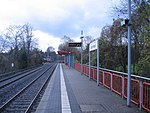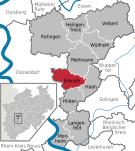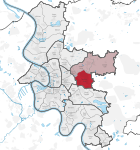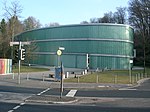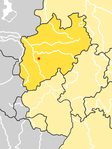Düsseldorf-Hubbelrath
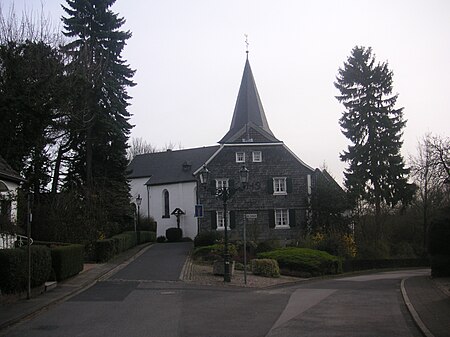
Hubbelrath is an urban borough of Düsseldorf. It borders to Gerresheim, Mettmann, Erkrath and Ratingen. The name comes from the old estate Hupoldesroth, which was written mentioned first time in 950 A.D. Hubbelrath was a farming settlement with an old romanic church. After Hubbelrath became a part of Düsseldorf in 1975 Hubbelrath got three new settlements: Knittkuhl - its nucleus was the estate Knittkuhl, but it hasn't been a settlement before it became a part of Düsseldorf, the Stratenhof-settlement and the settlement Rotthäuser Weg. Knittkuhl looks like a small town of its own - with 2,000 inhabitants. In Hubbelrath there are a green fee and a caserne of the Bundeswehr. This article is based on a translation of an article from the German Wikipedia.
Excerpt from the Wikipedia article Düsseldorf-Hubbelrath (License: CC BY-SA 3.0, Authors, Images).Düsseldorf-Hubbelrath
Am Scheidt, Dusseldorf Hubbelrath (Stadtbezirk 7)
Geographical coordinates (GPS) Address Nearby Places Show on map
Geographical coordinates (GPS)
| Latitude | Longitude |
|---|---|
| N 51.256666666667 ° | E 6.9108333333333 ° |
Address
Am Scheidt 1
40629 Dusseldorf, Hubbelrath (Stadtbezirk 7)
North Rhine-Westphalia, Germany
Open on Google Maps
